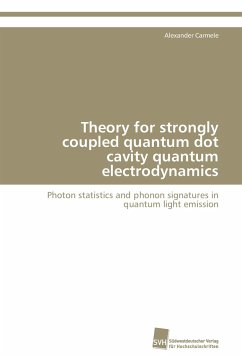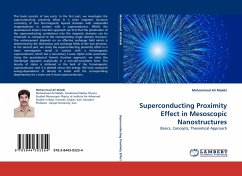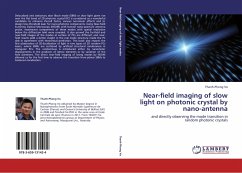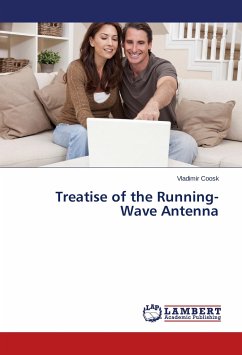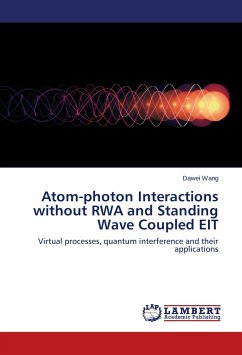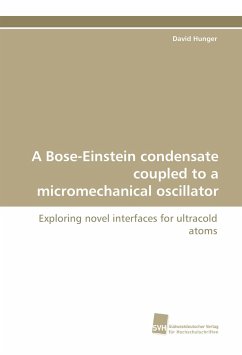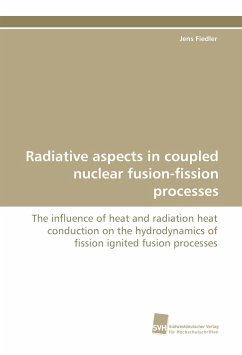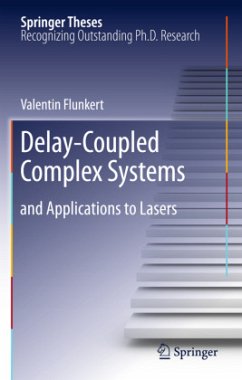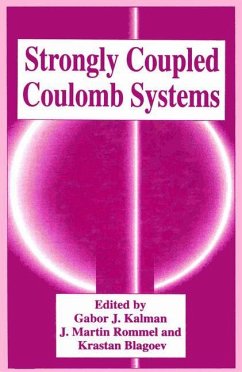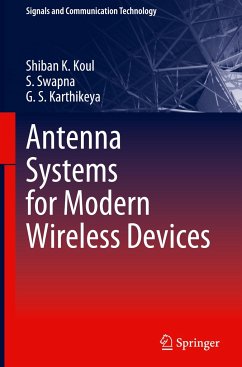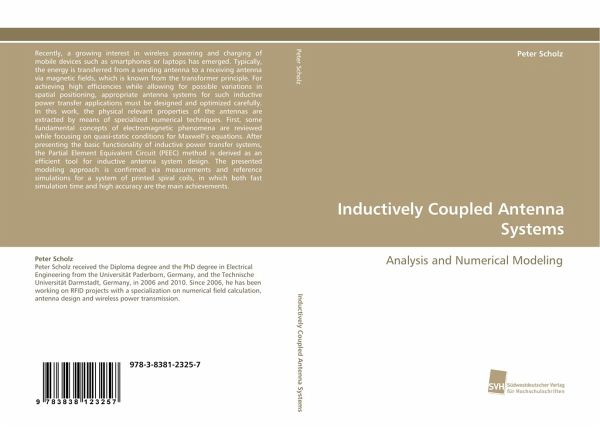
Inductively Coupled Antenna Systems
Analysis and Numerical Modeling
Versandkostenfrei!
Versandfertig in 6-10 Tagen
59,99 €
inkl. MwSt.

PAYBACK Punkte
30 °P sammeln!
Recently, a growing interest in wireless powering and charging of mobile devices such as smartphones or laptops has emerged. Typically, the energy is transferred from a sending antenna to a receiving antenna via magnetic fields, which is known from the transformer principle. For achieving high efficiencies while allowing for possible variations in spatial positioning, appropriate antenna systems for such inductive power transfer applications must be designed and optimized carefully. In this work, the physical relevant properties of the antennas are extracted by means of specialized numerical t...
Recently, a growing interest in wireless powering and charging of mobile devices such as smartphones or laptops has emerged. Typically, the energy is transferred from a sending antenna to a receiving antenna via magnetic fields, which is known from the transformer principle. For achieving high efficiencies while allowing for possible variations in spatial positioning, appropriate antenna systems for such inductive power transfer applications must be designed and optimized carefully. In this work, the physical relevant properties of the antennas are extracted by means of specialized numerical techniques. First, some fundamental concepts of electromagnetic phenomena are reviewed while focusing on quasi-static conditions for Maxwell's equations. After presenting the basic functionality of inductive power transfer systems, the Partial Element Equivalent Circuit (PEEC) method is derived as an efficient tool for inductive antenna system design. The presented modeling approach is confirmed via measurements and reference simulations for a system of printed spiral coils, in which both fast simulation time and high accuracy are the main achievements.



